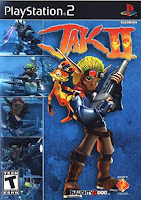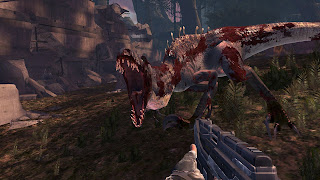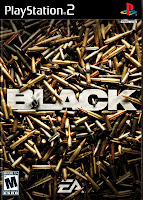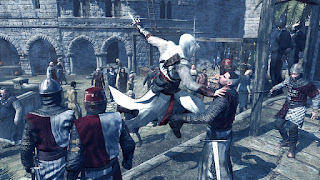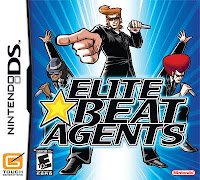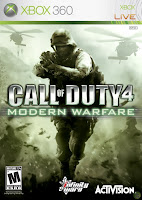31.
GoldenEye 007Before the release of
GoldenEye 007 in 1997, most first-person shooters were corridor shooters which had one simple philosophy: shoot first, ask questions later. These shooters, mostly clones of
Doom, asked their owners to shoot everything that moved, and little else.
GoldenEye changed the prevailing paradigm by introducing mission objectives which demanded a combination of firepower and brainpower.
GoldenEye is perhaps most famous for its legendary multiplayer modes, which allow four friends (or enemies) to shoot at each other in a number of environments with a variety of weapons. The legacy of
GoldenEye is most evident when this fact is considered: console games released post-
GoldenEye which did not feature a multiplayer mode were considered somehow incomplete.
32.
Devil May Cry Action game fans need look no farther than
Devil May Cry, one of the most frenetic and dynamic video games ever made. Developed by Capcom,
Devil May Cry borrows a lot of atmosphere and gloominess from its cousin
Resident Evil, but introduces a brand-new demonic storyline and mythology. The game follows the half-human, half-devil Dante who travels to a far off island to confront a growing evil. Although
Devil May Cry has a fair share of puzzle-solving and inventory management, the cores of its gameplay are the fights between Dante and the demonic agents he encounters on Mallet Island. Armed with several weapons, special attacks and the ability to transform into a super-powerful demonic creature, Dante is an indomitable fighting force.
33.
Gears of WarThird-person shooters tend to get overlooked in favor of their first-person cousins, but it’s difficult not to be impressed with a game as technically sound and thrilling as
Gears of War. Released roughly a year into the lifecycle of the Xbox 360,
Gears of War was the first game to truly justify the purchase of Microsoft’s expensive hardware.
Gears of War is the story of a deadly, protracted war between humans and a subterranean menace called the Locust Horde. The battles between the game’s hero, Marcus Fenix, and the Locust, which come in all shapes and sizes, are exhilarating, terrifying and emotionally exhausting.
Gears of War features dazzling graphics and special effects and an intuitive battle system which places an emphasis on moving in and out of cover.
34.
The Elder Scrolls III: MorrowindAlthough
Final Fantasy VII went a long way towards pushing the RPG into the mainstream, the genre still repels those gamers uncomfortable with the complexities and minutiae of hardcore RPGs. Consequently, ambitious titles like
The Elder Scrolls III: Morrowind are not for everyone. For those who love the endless customization, huge variety and epic storytelling of hardcore RPGS, however,
Morrowind is a dream come true. Although
Morrowind has a central storyline, it allows players to explore freely the expansive and richly detailed game world, interacting with people and events which have only a marginal connection to the main story arc. This level of freedom and open-endedness, criticized by some, is what makes
Morrowind so special.
35.
Mario Kart: Double DashMario earned his racing stripes on the SNES and N64, but it wasn’t until
Mario Kart: Double Dash on the Gamecube that Nintendo go-kart racing reached its pinnacle.
Double Dash is the fourth Mario Kart game, but the first to feature two characters per cart: one to drive, one to use items. Not only does this system of two interchangeable characters make
Double Dash insanely perfect, but it introduces a cooperative mode previously unseen in
Mario Kart. Players can choose from 20 playable characters, 11 of whom are new to the series. Each character has also been given a special item unique to him or her, like Mario’s fireballs or Donkey Kong’s giant banana. The only weakness in
Double Dash is its battle arenas, which never quite match those in
Mario Kart 64.
36.
The Last BladeThe Neo Geo played host to a great assortment of one-on-one fighting games, but none every matched the style and substance of
The Last Blade. Released late in the lifecycle of the Neo Geo,
The Last Blade is considered by many fans to be a spiritual sequel of the
Samurai Shodown series, another SNK weapons-based fighter.
The Last Blade features an orthodox control scheme but adds a new flavor with the ability to deflect an opponent’s attack mid-swing and the option to choose a mode of attack before each match. Those who fight frenetically and rely on stringing together combos can choose “Speed mode”; those who fight with slower but more devastating moves can choose “Power mode.”
37.
Shadow of the ColossusThe development team that produced the cult hit
Ico returns with
Shadow of the Colossus, an action game which pits a young warrior against sixteen colossi, enormous, formidable creatures which roam the plains, deserts, ruins and lakes of a forbidden and forgotten land. A mixture of organic and architectural parts, each colossus is a wonder to behold; each encounter with a giant is unique and memorable.
Shadow of the Colossus eschews glossy graphics and complicated control schemes, opting instead to focus on mood, atmosphere and expressionism. Although director Fumito Ueda has hinted at links between
Ico and
Shadow of the Colossus, it is officially a spiritual successor and not necessarily a direct sequel.
38.
The Elder Scrolls IV: OblivionHad Bethesda stopped its production of
The Elder Scrolls with its third installment
Morrowind, it would be remembered as one of the top developers of both computer and console RPGs. In 2006, however, Bethesda released
The Elder Scrolls IV: Oblivion and added to its resume a hugely ambitious title with some of the most beautiful graphics ever seen on a console game.
Oblivion takes place in Cyrodiil, the central imperial province of Tamriel, where a secret cult is working to literally open the gates of hell. Like
Morrowind,
Oblivion is an open-ended RPG where players can postpone the main quest indefinitely, opting instead to undertake any number of side-quests or simply wander around the gorgeously rendered game world.
39.
Excitebike 64Of all the great Nintendo 64 games,
Excitebike 64 is probably the most overlooked. It’s neither as sexy nor as famous as titles like
GoldenEye 007 or
Super Mario 64 but it’s an essential game in the N64 library and the best racing game to appear on the system, surpassing fan favorites like
Wave Race 64 and
F-Zero X. Like its ancestor on the NES,
Excitebike 64 is a motocross racing game which combines a realistic physics engine with some arcade embellishments. Players can choose one of six riders and compete against the CPU or against three friends in twenty indoor and outdoor tracks.
Excitebike 64 features several special tracks, stunt courses and a track editor, which allows players to build their own personalized tracks from scratch.
40.
The Legend of Zelda: Twilight PrincessAfter its experiment with
The Wind Waker, it was perhaps inevitable that Nintendo would opt for a more conventional
Zelda adventure. Originally planned for a late 2005 release,
The Legend of Zelda: Twilight Princess was postponed a year and released in November 2006 alongside the Nintendo Wii, making it the first
Zelda launch title.
Twilight Princess is a loving tribute to
Ocarina of Time, and pays homage to its precursor throughout the game. It is one of the most ambitious
Zelda games ever made and easily the largest, taking some 60 hours to complete.
Twilight Princess marks the first appearance of Midna, one of the all-time great
Zelda supporting characters, and several innovations, including horseback swordfights, Wii remote swordplay and Link’s ability to transform into a wolf.
 Game: skate.
Game: skate.






